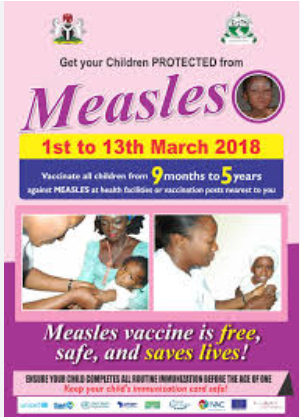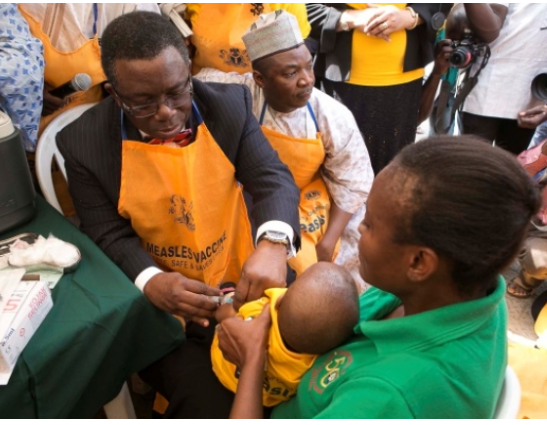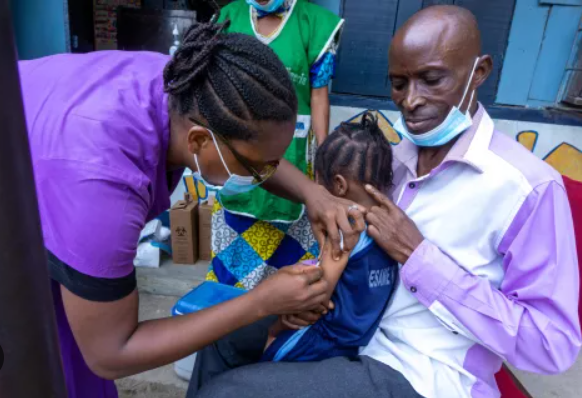By Joke Kujenya
YOUNG ADAMU’s laughter filled the house until a high fever and red rash signaled a severe case of measles.
His not-very educated parents, deeply worried, swiftly sought help at the local health center.
The diagnosis was grim, but their determination was stronger.
Adamu’s mother, Amina, meticulously followed the doctor’s advice, ensuring he received the required medications and kept him hydrated.
Surprisingly, they transformed their shelter home into a clean, comforting space to support his recovery.
Also with the health center’s support, Adamu gradually regained his strength.
His parents’ vigilance, combined with timely medical intervention, turned a terrifying ordeal into a story of resilience.
They shared their experience with JKNewsMedia, emphasizing the importance of vaccination and quick response, hoping to spare other families the same fear and uncertainty.
Today, Adamu’s laughter is even more precious, of course, it should be. His parents’ response saved his life.
Measles in Children
Measles is a highly contagious viral disease that primarily affects children, causing symptoms such as high fever, cough, runny nose, and a characteristic red rash.
It can lead to severe complications like pneumonia, encephalitis, and even death, particularly in malnourished children or those with weakened immune systems.
Vaccination remains the most effective way to prevent measles, with the measles, mumps, rubella (MMR) vaccine being widely recommended.
Despite vaccination efforts, measles outbreaks continue to occur, emphasizing the need for increased global vaccine coverage and timely immunization to protect vulnerable populations.

Measles Outbreaks Surge as Global Vaccine Coverage Stagnates
NEW DATA shows nearly 75% of infants live in countries with low vaccine coverage, fueling measles outbreaks.
The World Health Organization (WHO) and UNICEF reported that global childhood immunization coverage stalled in 2023.
This left 2.7 million more children under-vaccinated compared to 2019.
The WHO and UNICEF estimates of national immunization coverage (WUENIC) reveal trends for vaccinations against 14 diseases.
These trends highlight the need for catch-up, recovery, and system-strengthening efforts.
Catherine Russell, UNICEF Executive Director, stressed the importance of global efforts to close the immunization gap.
In 2023, 84% of children received three doses of the diphtheria, tetanus, and pertussis (DTP) vaccine.
However, 14.5 million children missed even a single dose.
Over half of unvaccinated children live in countries affected by conflict and instability, making them vulnerable to preventable diseases.
Vaccination rates against measles have also stalled.
Nearly 35 million children lack full protection.
Only 83% of children received their first measles vaccine dose in 2023.
The second dose reached 74% of children, far below the 95% needed to prevent outbreaks.
Measles outbreaks occurred in 103 countries over the past five years, mostly where vaccine coverage was 80% or less.
WHO Director-General Dr. Tedros Adhanom Ghebreyesus called measles outbreaks a warning sign of gaps in immunization.
He emphasized that measles vaccines are affordable and can be delivered even in challenging conditions.
He affirms that WHO aims to work with partners to close these gaps.
On a positive note, global HPV vaccine coverage among girls increased.

Stats on Measles
The percentage of adolescent girls receiving at least one dose of the HPV vaccine rose from 20% in 2022 to 27% in 2023.
Strong vaccination campaigns in countries like Bangladesh, Indonesia, and Nigeria contributed to this increase.
Dr. Sania Nishtar, CEO of Gavi, the Vaccine Alliance, highlighted the importance of the HPV vaccine in preventing cervical cancer.
However, HPV vaccine coverage remains below the 90% target.
High-income countries reached 56% of adolescent girls, while low- and middle-income countries only reached 23%.
A UNICEF poll revealed that over 75% of young people are unaware of HPV.
When informed, 52% expressed interest in the vaccine but faced financial and availability barriers.
Robust local action is needed to reach everyone with vaccines.
Despite some progress, the latest estimates stress the need to accelerate efforts to meet the Immunization Agenda 2030 targets.
These targets include 90% vaccine coverage and reducing zero-dose children to no more than 6.5 million by 2030.
The IA2030 Partnership Council calls for increased investment, innovation, and support for country leadership in improving routine immunization.
The WHO and UNICEF estimates of national immunization coverage (WUENIC) provide the largest dataset on immunization trends.
For 2023, data was provided by 185 countries, offering insights into the global state of vaccinations.





